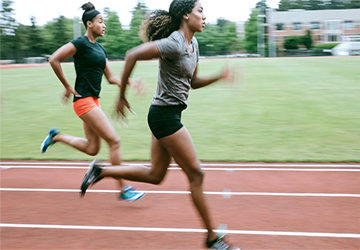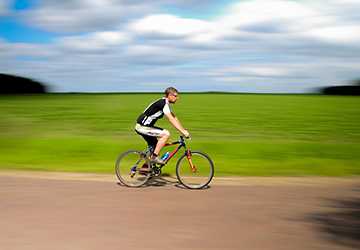How to Train Effectively for a Decathlon: A Step-by-Step Guide
Imagine standing at the starting line, heart pounding, as you prepare to sprint down the track for the 100-meter dash—your adrenaline surges as you leap over hurdles and soar through the air in the long jump. You summon every ounce of strength for the shot put and then gracefully clear the bar in the high jump. This is the decathlon, an actual test of all-around athleticism.
Training for a decathlon isn't just about becoming the fastest sprinter or the highest jumper; it's about excelling in various disciplines. This article breaks down the process into ten manageable headings, simplifying the journey to help you reach your goals.
Understanding the Decathlon
The decathlon, a challenging athletic competition, combines ten different track and field events into a grueling two-day test of an athlete's all-around abilities. Before you jump into training, it's crucial to understand what you're getting into. The ten events include the 100m sprint, long jump, shot put, high jump, 400m run, 110m hurdles, discus throw, pole vault, javelin throw, and the 1500m run.
This combination might sound intimidating, but it's an opportunity to showcase a diverse skill set. The decathlon only demands perfection in some events; it's about consistently being good. So, even if you're not the fastest sprinter or the highest jumper, you can still excel if you work hard and smart.

Setting Clear Goals
Before diving headfirst into training, setting clear, realistic goals is essential. What do you want to achieve in the decathlon? Are you aiming for personal improvement, or are your eyes on competitive success? Your goals will shape your training program and help you stay focused throughout the long and challenging journey.
Start by assessing your current abilities in each event. Identify your strengths and weaknesses. This self-awareness will guide your training plan, allowing you to allocate more time and effort to areas where you need improvement. Remember that progress takes time, so be patient and persistent in your pursuit of excellence.
Building a Solid Foundation
It would help if you established a strong foundation in fundamental track and field skills regardless of your goals or ambitions. Start with a base of aerobic fitness, strength, and flexibility. Regular running, strength training, and stretching exercises will help you prepare your body for the rigors of decathlon training.
In addition, work on your running technique and form. Efficient running mechanics will save energy and reduce the risk of injury during the 1500m run and the hurdles. Consider seeking guidance from a coach or experienced runner to fine-tune your form.
Event-Specific Training
Each decathlon event requires unique skills and techniques. To excel, you need to train specifically for each one. Here's a brief overview of how to approach some of the events:
· Sprints and Hurdles: Focus on explosive speed and power. Practice starts, acceleration, and maintaining top speed over short distances.
· Jumps (Long Jump, High Jump, Pole Vault): Work on your approach, take-off, and landing technique. These events require not just strength but also precision.
· Throws (Shot Put, Discus, Javelin): Develop upper body strength and explosive power. Technique is paramount, so seek guidance from a coach.
· Middle-distance (400m) and Long-distance (1500m): Build endurance with interval training and long runs. Learn pacing strategies to avoid burning out early.
Periodization and Planning
To prevent burnout and optimize your training, adopt a periodized training plan. This means breaking your workout into distinct phases, each with specific goals. A typical training year for a decathlete might consist of:
1. General Preparation: Building a base of fitness and strength.
2. Specific Preparation: Event-specific training, honing techniques.
3. Pre-Competition: Focusing on sharpening skills and improving personal records.
4. Competition: Participating in events to test your progress.
5. Rest and Recovery: Allowing your body to recover before starting the cycle again.

Nutrition and Recovery
Training for a decathlon is not just about physical exertion; it's also about taking care of your body. Proper nutrition is crucial to fuel your workouts and aid in recovery. Ensure you have a balanced diet with carbohydrates, proteins, and fats. Hydration is equally important, especially during long training sessions.
Pay attention to the importance of rest and recovery. Adequate sleep is essential for muscle repair and overall performance. Incorporate stretching, massage, and ice baths into your routine to help your body recover faster and reduce the risk of injury.
Mental Preparation
The decathlon is as much a mental challenge as it is physical. Stay mentally sharp by setting clear, achievable goals for each event. Visualize success and develop strategies to stay focused, especially during the grueling two days of competition.
Practice relaxation techniques such as deep breathing and meditation to manage stress and anxiety. Mental toughness is a valuable asset in the decathlon, helping you push through fatigue and setbacks.
Seek Professional Guidance
If you're serious about excelling in the decathlon, consider working with a coach specializing in multi-event competitions. A knowledgeable coach can provide expert guidance on technique, event-specific training, and periodization. They can also offer valuable insights into competition strategy and mental preparation.
Coaching is for more than just elite athletes. Even beginners can benefit from the personalized guidance and feedback a coach provides. If you need help finding a dedicated decathlon coach, seek out specialists for each event within the decathlon.
Competition Experience
Competing in decathlons is a unique experience. It's essential to gain exposure to competition settings to become comfortable with the pressure and logistics of multi-event meets. Participate in local track and field events to build confidence and refine your competition strategy.
Stay Committed and Enjoy the Process
Training for a decathlon is a long and demanding journey but also gratifying. Stay committed to your goals, even when progress seems slow. Celebrate small victories along the way, and remember to enjoy the process.
The friendships you'll make, the skills you'll acquire, and the personal growth you'll experience make the decathlon a particular athletic endeavor.
Conclusion
Training for a decathlon is a multifaceted endeavor that requires dedication, discipline, and a holistic approach to athletic development. With clear goals, proper training, and a focus on the fundamentals, you can embark on this exciting journey and strive for success in the ten challenging events that make up the decathlon.




















